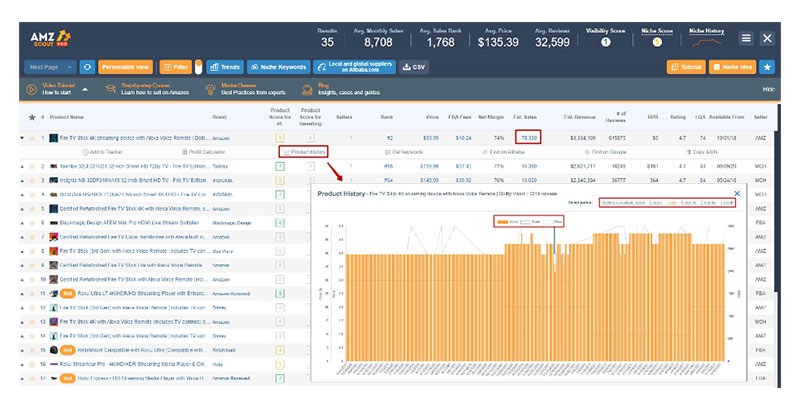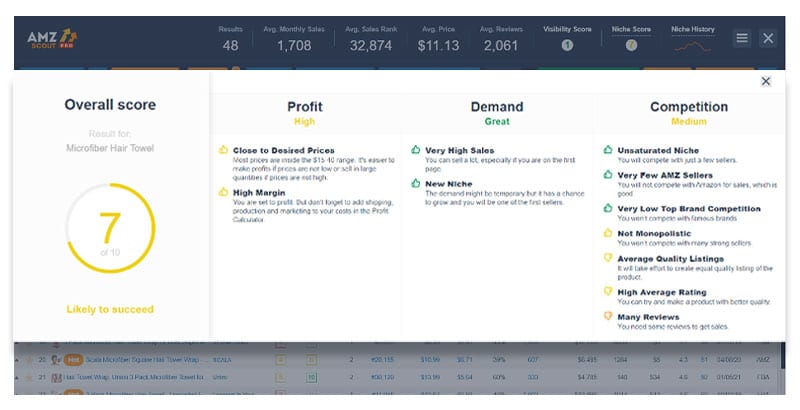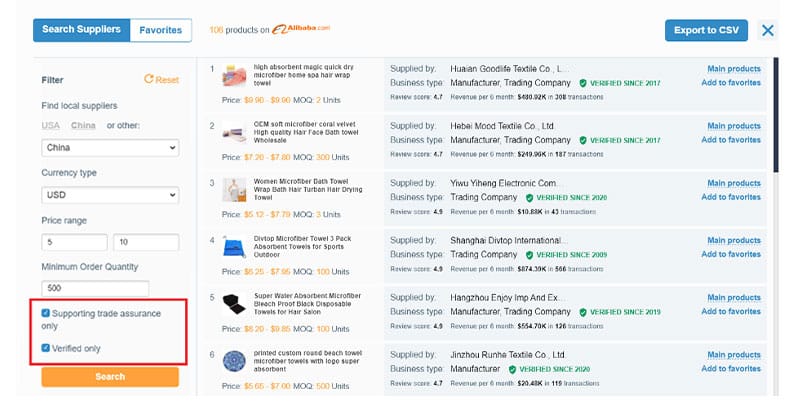8 common mistakes to avoid as a new Amazon seller
When most new Amazon sellers are starting out they’re focused on all the things they need to do to be successful. However, it’s equally important to be aware of what not to do.
One mistake is all it takes to turn what should have been a profitable business into a losing venture. So, it’s critical that you avoid any missteps while you’re establishing yourself on Amazon.
We talked to experienced seller John Stinson, who’s been on Amazon since 2019. John is 35 years old, and he has lived all his life in Philadelphia, in the United States. Before Amazon, John had been creating furniture and selling his products to retail stores, so he already had some selling experience. John decided to try his hand at Amazon, as it seemed to be a profitable opportunity, so he started selling interior items under his own brand. He faced a number of challenges while building his business but was able to overcome them and find success.
To help you on your journey, here are his eight most common mistakes to avoid when you start selling on Amazon.
1. Doing everything manually
There’s a lot of research that goes into starting an Amazon business. You have to search for products, review competitors, find the right keywords, and more. Doing this all manually, without the help of any software, costs valuable time. It also makes you more prone to mistakes.
However, if you invest in product research tools you’ll get through this process much quicker. This was a real difference-maker early on for John. Once he started using AMZScout he was able to quickly sort through the millions of products on Amazon and zero in on the very best items.

Plus, these tools give you access to a wide range of data, such as average monthly sales, profit margins, average review totals, competition levels, and sales history. This allows you to make informed decisions so you can choose more profitable products for your business.
2. Only focusing on demand
It’s true that any product you sell should have high demand. If you’re going to invest thousands of dollars in inventory you want to make sure there are actually people on Amazon who are going to buy it. However, one of the biggest mistakes you can make is just looking at how popular an item is and not considering any other factors.
For example, let’s say you go on Amazon’s bestseller list and see that a certain pair of binoculars are extremely popular. You figure that this product must be generating a lot of sales, so you purchase a bunch of similar binoculars and try to resell them on Amazon. While in theory this seems like a good idea, there are a number of ways this can go wrong:
- Because the item is one of the most popular products on Amazon there are probably a lot of other sellers offering it. High competition levels make it difficult to get found by customers, especially as a new seller.
- Binoculars can be heavy, which will increase your shipping, storage, and fulfillment costs.
- Those extra expenses will eat into your profit margins. If your sales price isn’t high enough you might not be able to make much money on every sale.
The moral of the story is, don’t just sell the most popular item you can find. Instead, choose a product that has good demand but also low competition and strong sales margins. As mentioned above, the best way to analyze these metrics is to use product research tools. They break down demand, profit margins, and competition levels for every item on Amazon, making it easy to find the most profitable products.

3. Overestimating profits
The amount of profit you’re able to generate on each sale will have a big impact on your success. The difference between $5 in profit and $10 might not seem like much, but in the long run that difference will make you twice as much money. Your profit is calculated by subtracting your expenses from your sales price. The mistake a lot of new sellers make is that they only consider the price they pay the supplier for their products and don’t factor in all the other expenses that go into every sale.
For example, let’s say you buy a product for $10 and plan to sell it for $20. You then build your entire business around the idea that you’ll make $10 on every sale. Unfortunately, this isn’t true. You also have to consider:
- The price to ship your goods from your supplier to you/Amazon.
- The referral fee Amazon charges you on every sale, which averages around 8% – 15% of the sale price.
- If you choose to fulfill your orders through Amazon FBA you’ll need to consider their fulfillment and storage fees, which fluctuate depending on the size of your item.
- Your advertising costs. If you choose to promote your product with Amazon Ads that will further cut into your profit margins.
All of a sudden that $10 of profit becomes $5 or less. If you were expecting to make more this can negatively impact your business.
4. Selling the exact same products as others
Another mistake is finding a product on Amazon that meets all of your criteria, then recreating that item exactly. Again, this seems like a great plan. If the original product is successful yours will be too, right?
Not necessarily. That other product has a history on Amazon. It likely has lots of positive reviews and an established customer base. Why would people buy the exact same item from you instead of someone with a proven track record? The truth is they probably won’t. Instead, a better strategy is to create your own unique product. Use the original as inspiration and make some changes to improve it.
A great way to do this is to look at the item’s reviews. What are people’s most common complaints? For example, maybe the item is a cell phone case, and while people love the look of it they complain that it’s too flimsy. So, all you have to do is create a case that looks just like it but make it stronger.
If people see that you’re offering a better quality product they’ll be much more likely to choose you over your competitors.
5. Choosing the supplier that offers the lowest price
It’s always tempting to buy your products as cheaply as possible. The lower your costs the more profit you can make, right? While this may be true, if you lower your costs too much it may hurt your business over time.
We’ve all heard the saying “you get what you pay for.” Well, it applies to ecommerce as well. Generally speaking, the cheaper your items the lower their quality. That means there’s a higher chance they’ll break or be defective, which leads to bad reviews which then leads to fewer sales. Plus, suppliers that compete by offering the lowest price generally aren’t the kinds of companies you want to work with. This usually means their products are inferior so they have to lower their price to get business.
Instead of automatically going with the cheapest supplier, choose a few you feel are promising and have them send you a sample. Inspect all their items and then choose a company that offers quality goods as well as a price that works with your budget. If you’re looking for a supplier on Alibaba, also consider their rating and certifications to ensure you select a reputable business.

6. Overspending on PPC ads
Amazon Ads are one of the best ways to promote your products and increase your sales. But if you’re not careful you’ll end up spending a bunch of money on advertising and won’t have any sales to show for it. Instead of just investing all your money into PPC right away, start with a small budget. Experiment with a few different ads to see what works best and monitor your results. Once you have enough data cancel the ads that aren’t performing well so all your money is going towards your best ads.
You may also find your listing isn’t converting very well, in which case you should make some changes. Then, once your ads are actually making you money, increase your budget. This way, you know you’re spending money on ads that are profitable.
7. Spending money on too many courses
If you’re a new Amazon seller it makes sense that you’d want to learn from someone more experienced than you. And more often than not this is a good idea. However, too often people invest in courses that don’t provide a lot of value. The teacher claims to be an “expert,” but in reality they’re just a marketer trying to make a quick buck. As a result, these people jump from one course to another, continually paying for information that doesn’t actually help them.
It’s definitely a good idea to invest in education, especially when you’re starting a new business. But instead of just blindly paying for a course make sure to do your research. Here are a few tips to help you find the best courses:
- Research the teacher. Are they actually an Amazon seller?
- Lookup testimonials from past students to see what they have to say about the course.
- Some courses offer the first lesson for free or let you see a bit of the course before you buy it. Have a look and see if the information seems valuable and makes sense.
If you find a course that actually provides you with good information it can dramatically improve your results, so it’s worth doing your homework.
8. Not managing your inventory properly
Once your items are live on Amazon your work isn’t done. Too often, new sellers don’t pay attention to their inventory, and eventually they run out. This is another costly mistake.
The most obvious result of running out of inventory is that you’re not able to make any sales. People may find your product, but if there’s no inventory they can’t buy from you. Every day that you don’t have inventory is a day you’re missing out on sales.
But that’s not the only problem. Sales impact your rankings in Amazon searches, so if you’re not making any sales you’ll eventually disappear from the search results. Even after you restock your inventory and start making sales again it could take a while to regain your previous position.
Because of this, make sure to keep an eye on your inventory levels. Consider how long it will take to receive a new shipment from your supplier and place your order with enough lead time to ensure your products arrive before your inventory runs out. An inventory management software helps make sure you never run out of stock or overstock.
Conclusion
Building a new Amazon business requires a lot of work, but if you avoid these mistakes you’ll make the process a lot easier for yourself. With the right knowledge, and a quality product, there’s no reason why you can’t become a profitable Amazon seller.